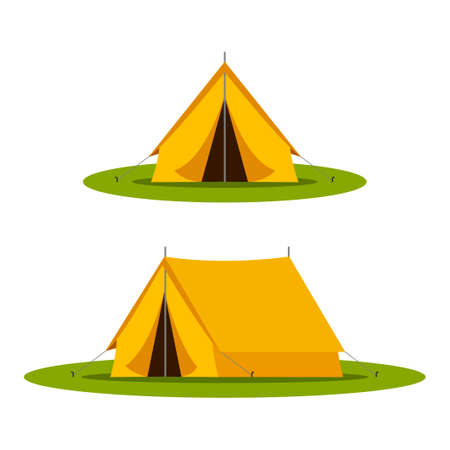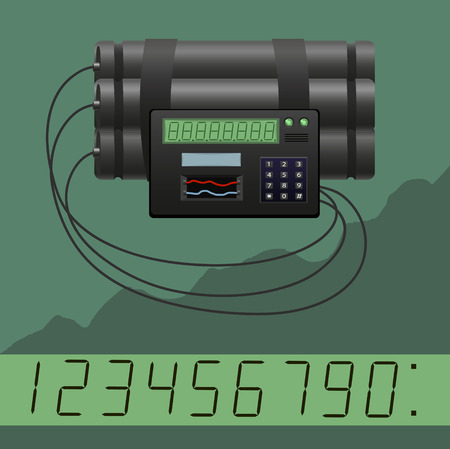1. Getting Started with DIY Solar Power
Embarking on a DIY solar power project for your campsite is both rewarding and practical. Before diving in, it’s essential to understand the basics. First, assess your campsite’s energy needs—think about what you want to power, like LED lights, phones, or a mini fridge. Make a simple list of devices and estimate their daily watt-hour consumption. Next, scout out the best spot for your solar setup. Look for areas that get full sun throughout most of the day, away from heavy tree cover or shadows from rocks and gear. Remember, solar panels work best with consistent sunlight. Finally, consider how portable you need your system to be. Some campers prefer fixed setups, while others go for lightweight, foldable panels that are easy to move. With these fundamentals in mind, you’re ready to explore deeper into creating a custom solar solution that fits your adventure.
Choosing the Right Solar Panels
When setting up a DIY solar power system for your campsite, selecting the right type of solar panel is essential. Not all panels are created equal, and your choice will impact efficiency, portability, and how well your setup meets the unique needs of American campers. Generally, there are three main types of solar panels:
| Panel Type | Efficiency | Weight & Portability | Best For |
|---|---|---|---|
| Monocrystalline | High | Lightweight/Compact | Extended stays, limited space |
| Polycrystalline | Moderate | Moderate | Larger campsites, budget setups |
| Thin-Film | Low-Moderate | Very Lightweight/Flexible | Short trips, easy transport |
Sizing Your Solar Panel System
The size of your solar setup depends on your energy needs. Start by listing all devices you plan to use—phones, lights, coolers—and estimate their daily watt-hour consumption. As a rule of thumb for most US campsites:
- A 100W portable panel can keep phones charged and run basic LED lighting.
- A 200W–300W array is better for running small appliances or keeping a laptop powered.
Always factor in weather conditions and daylight hours typical in your camping region. For example, panels in sunny Arizona will outperform those in the shaded woods of the Pacific Northwest.
Key Features for American Outdoor Use
- Portability: Foldable or suitcase-style panels are popular for car camping and RVs.
- Durability: Look for weatherproof or ruggedized designs—think rain in Oregon or dust in Utah.
- Ease of Setup: Plug-and-play systems with integrated charge controllers simplify life at campgrounds.
Summary Table: What Matters Most?
| Feature | Why It Matters for Camping |
|---|---|
| High Efficiency | Powers more devices using less space on-site |
| Portability | Makes transportation and setup hassle-free |
| Tough Build Quality | Handles unpredictable American weather and terrain |
Selecting the right solar panel ensures your campsite remains connected, comfortable, and eco-friendly—no matter where your American adventure takes you.

3. Wiring and Setup Simplified
Setting up your solar power system at a campsite doesn’t have to be complicated. With the right approach and some basic tools, you can create a safe, efficient connection from your solar panels to your battery bank. Here’s a minimalist guide for U.S. campers:
Essential Materials
Gather standard copper wires (AWG 10-12 for most portable systems), MC4 connectors, an inline fuse, ring terminals, and a simple wire stripper/crimper. All of these are readily available at major hardware stores like Home Depot or Lowe’s.
Step-by-Step Connection
1. Layout & Safety First
Set up your solar panels in a spot that gets maximum sunlight, away from foot traffic. Before wiring, ensure everything is dry and powered off.
2. Connecting Panels
Use MC4 connectors to join panel outputs together—parallel for more current, series for higher voltage—depending on your battery specs. Double-check polarity: red is positive (+), black is negative (–).
3. Inline Fuse Protection
Install an inline fuse close to the battery’s positive terminal. This simple step protects your setup from short circuits or accidental surges.
4. Battery Bank Hookup
Attach wires using ring terminals to your deep cycle battery posts—positive to positive, negative to negative. Tighten securely but don’t overtighten; hand-tight plus a quarter-turn with a wrench is usually enough.
Tidy Up & Test
Keep wires organized with zip ties or Velcro straps to prevent tripping hazards and accidental pulls. Once everything’s connected, turn on your charge controller and monitor the initial charge flow to ensure all connections are solid and safe.
This streamlined approach uses familiar materials and straightforward steps—perfect for anyone looking to harness solar power on their next outdoor adventure.
4. Picking and Protecting Your Battery Bank
Choosing the right battery bank is essential for a sustainable and worry-free camping experience. The battery type and size you select directly impacts how much power you can store from your solar panels and how long your setup lasts off the grid. Here’s what you need to know.
Battery Types: Which One Fits Your Needs?
| Type | Pros | Cons |
|---|---|---|
| Lead-Acid (AGM/Deep Cycle) | Affordable, reliable, easy to find in the US | Heavy, lower cycle life, needs proper ventilation |
| Lithium-Ion (LiFePO4) | Lightweight, long lifespan, high efficiency | Higher upfront cost, needs smart charger |
| Gel Cell | No maintenance, spill-proof, handles extreme temps | More expensive than lead-acid, sensitive to overcharging |
Sizing Your Battery Storage: How Much Is Enough?
The key is balancing your daily energy use with your battery capacity. Calculate your total watt-hour (Wh) consumption per day—think lights, phone charging, small appliances. For most weekend campers, 100-200 amp-hours (Ah) at 12V is a solid starting point. For extended stays or more devices, scale up accordingly.
Sizing Formula Example:
- Total Daily Use (Wh) ÷ Battery Voltage (V) = Amp-Hours Needed (Ah)
- Add 20% margin for cloudy days or extra usage.
Protecting Your Battery Bank: Simple Safety Tips
- Enclosures: Store batteries in vented plastic or metal boxes to protect from rain and dust.
- Cable Management: Use cable ties and clamps to prevent accidental shorts.
- Avoid Extreme Temps: Keep batteries shaded in summer and insulated in winter for best performance.
- Routine Checks: Inspect terminals for corrosion monthly and keep connections tight.
- Theft Prevention: Secure battery boxes with locks or chains if leaving camp unattended.
A well-chosen and protected battery bank is the heart of your DIY solar system. With the right setup, you’ll enjoy reliable energy—quietly and sustainably—wherever your campsite takes you.
5. Efficient Power Management at Camp
Mastering efficient power management is key to a seamless off-grid camping experience. When you generate your own solar energy, every watt counts. Here are some minimalist yet practical tips to optimize power use for your camping essentials while staying in harmony with nature:
Prioritize Energy Needs
List your must-have devices—think lights, phone chargers, small fans, or a mini-fridge. Rank them by importance. This helps allocate limited solar energy where it’s truly needed, avoiding waste on non-essentials.
Time Your Usage
Take advantage of peak sunlight hours for charging battery banks and running high-draw devices. Use stored power for nighttime needs, like LED lanterns or emergency radios, to maintain a natural rhythm with the sun’s cycle.
Choose Low-Power Devices
Select gear designed for efficiency: LED lighting, USB-powered gadgets, and low-wattage appliances. These consume less power and extend the life of your battery bank, reducing your footprint on the environment.
Adopt Mindful Habits
Switch off devices when not in use. Share charging ports with fellow campers to maximize output from each solar panel. Embrace downtime—read by natural light or enjoy the stars instead of electronic screens.
Create Synergy with Nature
Position panels in open areas where they’ll catch optimal sunlight throughout the day. Angle them to follow the sun’s path if possible. In cool weather, insulate batteries to maintain performance; in hot climates, shade them from direct heat to prolong lifespan.
Monitor & Adjust
Keep an eye on your system’s charge indicators. Adjust habits as you learn how much power you generate versus how much you use. This feedback loop supports sustainable living—and lets you stay present in nature without sacrificing comfort.
6. Troubleshooting and Maintaining Your System
Keeping your DIY solar power setup working efficiently at your campsite doesn’t have to be complicated. With a few simple checks and regular maintenance, you can enjoy reliable off-grid energy trip after trip.
Basic Troubleshooting Steps
If your system isn’t delivering power or seems sluggish, start with these quick checks:
1. Inspect Connections
Loose or corroded wires are a common culprit. Gently tug on each connection and tighten as needed. Look for any signs of rust or fraying.
2. Check the Panels
Dirt, dust, or leaves on your solar panels can block sunlight. Wipe them clean with a soft cloth—never use abrasive cleaners. Make sure the panels are angled toward direct sun.
3. Monitor the Battery Bank
Batteries don’t last forever. If you notice reduced capacity or strange noises, it might be time to replace one. Always use batteries rated for deep-cycle, outdoor use.
4. Inspect the Charge Controller
Your charge controller protects batteries from overcharging. Make sure indicator lights are normal per your manual. If in doubt, reset the controller by disconnecting and reconnecting it.
Routine Maintenance Tips
- Keep all components dry and free from mud, sand, or debris.
- Store cables neatly when not in use to avoid tangling and wear.
- Check panel mounts for stability after wind or storms.
- Test your setup before every trip—don’t wait until you’re off-grid to find problems.
A Little Care Goes a Long Way
A well-maintained solar system lets you camp longer and more sustainably, reducing your reliance on disposable batteries or gas generators. A few minutes spent on upkeep ensures your next adventure is powered by the sun, hassle-free.
7. Eco-Friendly Upgrades and Add-Ons
Once your basic DIY solar power setup is running smoothly, you can level up your campsite with eco-friendly accessories and thoughtful expansion ideas. Start by adding LED string lights or lanterns that draw minimal energy from your battery bank. These not only illuminate your site but also last longer on a single charge compared to traditional lights. If you love to cook outdoors, consider a solar oven or a small induction cooktop powered directly by your solar array—these options keep your meals sustainable and reduce the need for propane or firewood.
For charging personal devices, look into USB solar chargers or wireless charging pads that integrate seamlessly with your system. Need to keep food fresh? A compact, energy-efficient fridge/freezer designed for off-grid use can be a game-changer, especially during longer stays. To expand your power capacity, modular battery banks let you add more storage as needed without overhauling your entire setup. Foldable or rollable solar panels are perfect add-ons for campers seeking portability and flexibility in capturing sunlight throughout the day.
Don’t forget about water management: portable solar water pumps and purification systems ensure clean water access without drawing from fossil fuels. For those chilly nights, low-energy heated blankets or seat pads can provide comfort while sipping less power than standard electric heaters. Finally, smart energy monitors help you track consumption in real time so you can adjust usage and make the most of every watt—keeping your camping adventure green, quiet, and deeply connected to nature.

